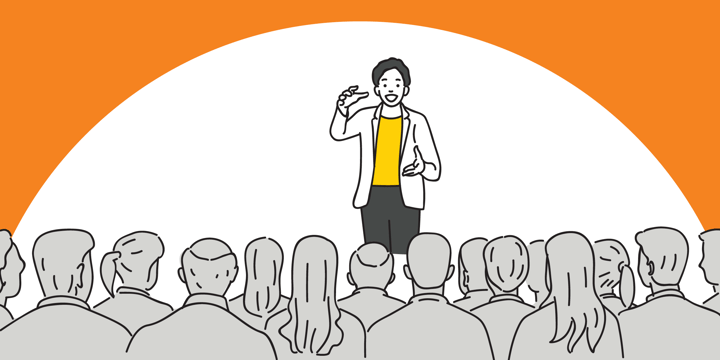Editor's note: Links to the sessions are no longer available and have been removed.
Each year, TechSoup staff attend the NTEN-NTC nonprofit technology conference to catch up with the newest tech trends and learn how to better provide nonprofits with the tools to succeed.
This year, we went to Portland, Oregon, for a whirlwind of events, sessions, and meetups. We kicked things off by hosting a celebration of civil society (complete with a live band!) that also offered folks an opportunity to ask questions about our direct public offering (DPO). The next three days were filled with sessions, workshops, and spontaneous chats with nonprofits, tech partners, and tech users.
Below, you'll find the top five takeaways we wanted to share with you.

Visual Mapping Gets a Spotlight
Customer or supporter experience is not just for the for-profit world. The nonprofit audience also expects to receive a personalized experience when they interact with organizations, likely due to increasing data and automation technology. It is important that we build "customer journeys" based on what each customer needs and that we deliver them at the right time. Start with mapping the customer journey.
Visual mapping is an effective and powerful way to show resources and process and to identify any gaps. "Customer Journey Mapping Demystified," presented by Anna Marshall of AdoptUSKids, showed how the organization mapped its customer journey in order to improve its customers' user experience. Using old-fashioned sticky notes to brainstorm and group and analyze their data, they found that everyone benefited from the collaborative nature of the exercise. As the presenter said, "The process was more important than the outcome."
Another session, "Mapping Your Digital Ecosystem," walked us through the process of mapping a digital ecosystem. This includes the people, data, systems, processes, and products that, when used together, achieve common goals. Visual mapping can reveal duplicate systems as well as time-consuming and inefficient manual processes. While some nonprofits use old-school sticky notes to create their visual maps, here are some suggested tools for visual mapping.
Online
- Google Draw (free)
- Lucidchart
- Draw.io (free)
- Gliffy
Software
The takeaway for nonprofits: It's not too late to use mapping to identify the strengths within your organization and where it needs improvement.
New Tech Needs Lasting Institutional Buy-in
Nonprofits and libraries need organizational buy-in when they introduce a specific technology solution throughout the organization. It is not enough just to implement the new system or software, or get hew hardware. Everyone needs to be on board for the successful deployment of new tech.
In the session "Building a Solid Project Management Culture at Your Organization," we learned how project management training helped the staff of True Colors United to enhance their project management skills and prepare them to better train their community coalitions nationwide. According to speaker Joe Moran, the T's of successful project management are training, technology, templates, and talking.
The takeaway for nonprofits: If you adopt a project management system at your nonprofit, you're going to need deep institutional buy-in.
Are You Prepared for a Disaster?
In the event of a disaster, would you have all the contact information you need to reach employees and service providers? Do you know who has all the license keys needed to reboot your core software?
While disaster recovery planning is an important part of any business continuity plan, 75 percent of nonprofit organizations have no disaster recovery plan in place. During the session "Preparing for the Worst: Disaster Recovery 101," presenters Chris Fink and Ramona Dopps outlined the goals for operational continuity, provided suggestions for organization process discovery, and listed the steps for how to develop a discovery recovery plan.
Here are some tips:
- Consider using cloud-based productivity software (Office 365, G Suite)
- Prevent server disasters by owning and maintaining as few as possible. Consider using hosted file storage.
- If you are using legacy desktop applications, look into cloud-based or hosted options from your software vendor.
- Use two-step authentication to provide an extra layer of security.
- Use antivirus and backup software
Takeaway for nonprofits and libraries: It's time to build your disaster preparedness kit.
Digital Marketing and Fundraising Benchmarks
How does your organization's email, web, social media, and digital advertising match up to nonprofit standards? "First Look: Peek Nonprofit Digital Metrics from M+R's Benchmarks Study" offered a preview of data points that are crucial for nonprofits to understand so they can improve their marketing and advertising efforts. This study is full of thought-provoking and conversation-starting data, but here are the ones that stood out for us:
Online donation revenue:
- Showed a 23 percent growth in 2016 – 2017.
- Showed only a 1 percent increase in 2017 – 2018.
- December 2018 stock market instability appears to have impacted online giving.
Facebook Fundraisers:
- Average $31 per gift
- Raise 23 percent of their revenue in November
Return On Ad Spend (ROAS):
- $4.78 in search
- Display $0.36
- Social: $0.83
- Video: $0.30
The takeaway for nonprofits: It's time to collect and compare your data so you can make improvements to your program. We'll be sharing more about this specific session in the future.
We Are All Tech Activists
The conference began with a inspirational call to action by keynote speaker Idalin Bobé. She's the founder of TechActivist.Org, a grassroots organization that is "building a pipeline of techies to serve the people." She shared her very personal journey of growing up in a poor Afro-Latinx community in North Philadelphia, Pennsylvania, and how it sparked her passion for social activism.
As a firsthand witness to the inequalities of education and technology, she has dedicated her work towards empowering social activists through the use of technology. Her tech literacy programs provide both youth and social activists with many different workshops, ranging from digital media tools to digital security.
Her inspirational words placed our everyday work in the broader context of how powerful technology can be when used for social good. The 2019 NTC conference illustrated that we are a huge community of people who care, and our impact can be immense. Bobé captured this perfectly in her remarks: "Together when we are united, we can create so much change and bring so much impact."
We're already looking forward to next year.







